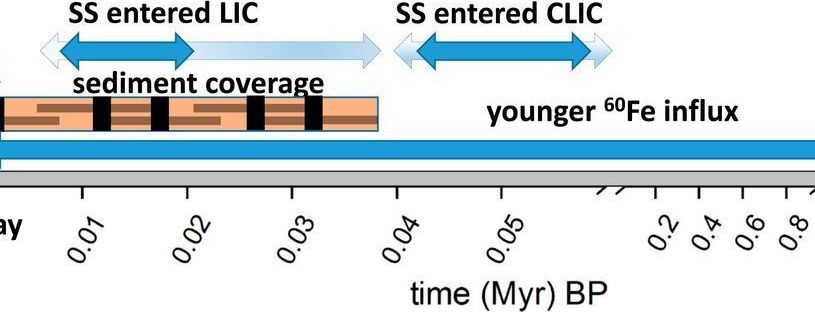Nearby supernova explosions shape the interstellar medium. Ejecta, containing fresh nucleosynthetic products, may traverse the solar system as a transient passage, or alternatively the solar system may traverse local clouds that may represent isolated remnants of supernova explosions. Such scenarios may modulate the galactic cosmic-ray flux intensity to which Earth is exposed. Varying conditions of the traversed interstellar medium could have impacts on climate and can be imprinted in the terrestrial geological record. Some radionuclides, such as 60 Fe, are not produced on Earth or within the solar system in significant quantities. Their existence in deep-sea sediments demonstrates recent production in close-by supernova explosions with a continued influx of 60 Fe until today.
Nuclides synthesized in massive stars are ejected into space via stellar winds and supernova explosions. The solar system (SS) moves through the interstellar medium and collects these nucleosynthesis products. One such product is 60 Fe, a radionuclide with a half-life of 2.6 My that is predominantly produced in massive stars and ejected in supernova explosions. Extraterrestrial 60 Fe has been found on Earth, suggesting close-by supernova explosions ∼2 to 3 and ∼6 Ma. Here, we report on the detection of a continuous interstellar 60 Fe influx on Earth over the past ∼33,000 y. This time period coincides with passage of our SS through such interstellar clouds, which have a significantly larger particle density compared to the local average interstellar medium embedding our SS for the past few million years. The interstellar 60 Fe was extracted from five deep-sea sediment samples and accelerator mass spectrometry was used for single-atom counting.
